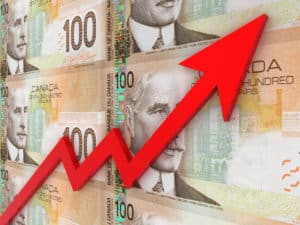You may have read that the merger of leading Canadian grocery retailer Loblaw (TSX:L) and Shoppers Drug Mart (TSX:SC) was presented by Loblaw CEO Galen Weston to Shoppers’ Chairman Holger Kluge “in a minivan on a country road.”
If you’re trying to make sense of that venue, with its simultaneous rustic imagery and shout-out to hockey moms, you’re not alone. Despite the informality of the initial meeting, this is one complex and strategically important deal for Loblaw. Let’s review four key themes that point to future value creation from the merger, as well as one risk Loblaw investors should be aware of.
Dynamism
At a total deal price of roughly $12.5 billion, Loblaw is valuing Shoppers at 1.2 times Shopper’s 2012 revenue, and at approximately 20.5 times trailing-12-month earnings. Loblaw is happy to pay a premium for Shoppers, as in return it obtains a much more profitable company than itself.
Last year, Loblaw generated $865 million of pretax earnings on $32 billion in sales. Shoppers netted almost as much as Loblaw in pre-tax earnings: $823 million, but it did so on only $10.8 billion of sales, roughly one-third Loblaw’s amount. Loblaw is buying a higher-margin business, and a strong cash flow vehicle: in 2012, Shoppers generated $917 million of operating cash flow — more than half of Loblaw’s $1.6 billion of operating cash flow. But as with its profit, Shoppers managed to produce its cash on a fraction of Loblaw’s sales.
Distribution
This deal is as much about distribution for Loblaw as it is about expanding its retail presence. Loblaw operates the largest fleet of commercial trucks in Canada. After spending years working to improve its supply chain, and receiving its fair share of maligning, the company’ distribution system is now optimized for this merger. One of the tangible yields of the upgrade has been a more efficient produce delivery system, which minimizes shrink (spoilage of produce inventory) and also reduces lead times. The system is primed for Loblaw to place grocery items in the front sections of Shoppers locations.
Better forecasting has also been an emphasis of Loblaw’s supply-chain improvements, especially in the area of understanding consumer demand. Loblaw worked with global consulting firm Accenture to better predict inventory levels and speed replenishment of items from the warehouse to the shelf. Loblaw will likely have the capability to manage Shoppers’ inventory more efficiently, and presumably, some of the $300 million in cost synergies that the combined entity predicts will come from Shoppers’ utilization of Loblaw’s widespread delivery network.
Distribution into the smaller, urbanized neighborhoods where Shoppers excels represents an ingenious parry against major U.S. competition for Loblaw. Wal-Mart already has a significant Canadian presence, and Target entered Canada this year with a goal of having a total of 124 stores in the country by year-end. Instead of using its balance sheet resources to jump in and build out more large format stores, Loblaw will leverage the investment in its distribution system, placing President’s Choice and other popular brands into urban communities where (for the time being) the big-box American retailers don’t have significant reach.
Data
Last year, Shoppers sent out 150,000 separate offers to customers based on their shopping history. Shoppers’ Optimum program is widely acknowledged as one of the most successful loyalty programs in Canada. The analysis of the purchasing habits of 10 million customers in the Optimum program’s database will give Loblaw insight into how Shoppers ladles on incremental revenue opportunities with its better customers. For Canada’s largest retailer, the ability to reap even another 2 percentage points of sales from the tactical use of loyalty offers would translate into more than $600 million of additional revenue each year.
Demographics
In Shoppers’ 2012 annual report, the company outlined six “key external influences” that it is taking into account as it develops its strategic plans. One of these influences is the all-important demographic of senior citizens. Shoppers cites Statistics Canada, which predicts that seniors will comprise 25% of the Canadian population by 2036, accounting at that point for 45% of government health care spending. This population is of course ripe for not only Shopper’s pharmacy operations, but also its 62 “Shoppers Home Health Care Stores,” which sell assisted living devices.
With the merger, Loblaw maintains a selling relationship with a key demographic that it might otherwise lose in the coming decades. As the population ages, eschews driving, and retreats from suburban areas (where Loblaw locations now predominate), the positioning of Loblaw-distributed grocery items into Shoppers sites will become even more important. And of course, Loblaw will now own the pharmacies where a greying population will drop quite a few loonies going forward. As Fool colleague Iain Butler points out, Shoppers was one of the best pure plays on an ageing Canadian population. But you can still buy Loblaw.
One risk to be aware of
Despite all the positives of this merger, Shoppers (and other Canadian drug stores) will still have to deal with the efforts of provincial governments to limit the amount that drug retailers can be reimbursed for generic prescriptions[AS16] .
This is a looming threat to the profit and loss statements of domestic pharmacies, and the last thing that Loblaw wants to see is the bottom line of its new crown jewel erode. But perhaps this is where Loblaw’s mammoth distribution system can assist: as Shoppers seeks to diversity food, cosmetics, and clothing offerings to its front section to offset possible pharmacy weakness, it now has a muscular partner to procure nearly any desired product mix at optimal speed and a reasonable inventory cost.
Course of action
In one stroke of inspired dealmaking, Loblaw has increased its retail presence, broadened revenue opportunities for its vaunted distribution network, and insulated itself for the time being from American big box competition. If you’re a Shoppers shareholder, you’ve already won. If you hold Loblaw, you have reason to feel secure about the company’s long-term prospects.
Shoppers was one of the 5 stocks suggested in our special FREE report “5 Stocks to Replace Your Canadian Index Fund”. To download this report and learn about the remaining 4, simply click here now.
The Motley Fool’s purpose is to help the world invest, better. Click here now for your free subscription to Take Stock, The Motley Fool Canada’s free investing newsletter. Packed with stock ideas and investing advice, it is essential reading for anyone looking to build and grow their wealth in the years ahead.
Follow us on Twitter and Facebook for the latest in Foolish investing.
This post was created by Fool contributor Asit Sharma.
Fool contributor Asit Sharma doesn’t own shares in any of the companies mentioned at this time. The Motley Fool doesn’t own shares in any of the companies mentioned.







